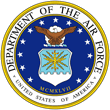Hickam team begins Wake Island assessment
WAKE ISLAND (AFPN) --
Airmen from the 15th Airlift Wing embarked on Day One of their intensive damage assessment here Sept. 14, following the destruction left by Super Typhoon Ioke Aug. 31.
The Airmen arrived Sept. 12 on a C-17 Globemaster III from Hickam Air Force Base, Hawaii, and will spend several days gathering the information they need to calculate the cost of damage left by the super typhoon.
Most of the Airmen are assigned to the 15th Civil Engineer Squadron in one of three specialties: structural (carpentry), utility (water treatment and plumbing), and electrical. The group broke into these three teams and began exploring facilities on the island the next morning.
"Each damage assessment crew has been given priority zones," said team leader Senior Master Sgt. John Wilde. "Today, the first area we're covering is what Wake Islanders refer to as downtown, which is where the majority of the housing, billeting, the dining facility and things of that nature are," he said.
As a three-person electrical team entered buildings, they looked for signs of potential trouble. Staff Sgt. Song Lee led a crew into an apartment.
"We're looking to see if any water or debris got into the wall outlets," Sergeant Lee said.
"Which ... it did," Tech. Sgt. Jon Turney replied from behind his flashlight across the room. This information will go into a computer database so a big-picture report can be generated.
Operational checks of a building's electrical system will have to wait until the island's power grid is functioning again. According to Jimmie Taylor, Wake Island's power production superintendent, that could be soon.
"There was some metal ripped off the end of this building, and one of the exhaust fans fell over, but that's about it," Mr. Taylor said from inside the power production facility, which was running on backup power by early afternoon.
Mr. Taylor said he hopes to restore power island-wide in the next few days.
"There isn't even that much moisture in here," he said. "We really got lucky."
The Air Force evacuated Wake Island's 188 residents Aug. 28; Ioke arrived three days later. The Category 5 storm brought 155 mph winds and 190 mph gusts directly through the island. Many facilities were left slumped in wet defeat, water marks a foot high on their interior walls and large parts of their rooftops on the ground beside their front doors. A plot of land populated with trees near the airfield became a backstop for sheets of metal ripped from nearby rooftops.
Before the assessment team arrived at Wake Island, they obtained satellite imagery and overflight photos. While the pictures clearly showed some damage, the storm's impact can perhaps only be really understood from the ground.
"The photos indicated there would be a lot of work here," Sergeant Wilde said. "But when we arrived and I actually saw firsthand the stripped vegetation, the parts of roofs strewn all over the island ... I honestly think, structural-wise, the photos didn't do justice to what I'm finding."
The Airmen arrived Sept. 12 on a C-17 Globemaster III from Hickam Air Force Base, Hawaii, and will spend several days gathering the information they need to calculate the cost of damage left by the super typhoon.
Most of the Airmen are assigned to the 15th Civil Engineer Squadron in one of three specialties: structural (carpentry), utility (water treatment and plumbing), and electrical. The group broke into these three teams and began exploring facilities on the island the next morning.
"Each damage assessment crew has been given priority zones," said team leader Senior Master Sgt. John Wilde. "Today, the first area we're covering is what Wake Islanders refer to as downtown, which is where the majority of the housing, billeting, the dining facility and things of that nature are," he said.
As a three-person electrical team entered buildings, they looked for signs of potential trouble. Staff Sgt. Song Lee led a crew into an apartment.
"We're looking to see if any water or debris got into the wall outlets," Sergeant Lee said.
"Which ... it did," Tech. Sgt. Jon Turney replied from behind his flashlight across the room. This information will go into a computer database so a big-picture report can be generated.
Operational checks of a building's electrical system will have to wait until the island's power grid is functioning again. According to Jimmie Taylor, Wake Island's power production superintendent, that could be soon.
"There was some metal ripped off the end of this building, and one of the exhaust fans fell over, but that's about it," Mr. Taylor said from inside the power production facility, which was running on backup power by early afternoon.
Mr. Taylor said he hopes to restore power island-wide in the next few days.
"There isn't even that much moisture in here," he said. "We really got lucky."
The Air Force evacuated Wake Island's 188 residents Aug. 28; Ioke arrived three days later. The Category 5 storm brought 155 mph winds and 190 mph gusts directly through the island. Many facilities were left slumped in wet defeat, water marks a foot high on their interior walls and large parts of their rooftops on the ground beside their front doors. A plot of land populated with trees near the airfield became a backstop for sheets of metal ripped from nearby rooftops.
Before the assessment team arrived at Wake Island, they obtained satellite imagery and overflight photos. While the pictures clearly showed some damage, the storm's impact can perhaps only be really understood from the ground.
"The photos indicated there would be a lot of work here," Sergeant Wilde said. "But when we arrived and I actually saw firsthand the stripped vegetation, the parts of roofs strewn all over the island ... I honestly think, structural-wise, the photos didn't do justice to what I'm finding."
